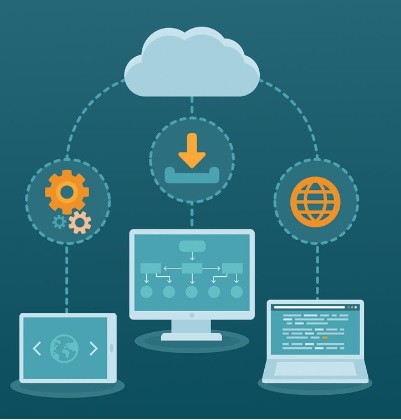How CI/CD process is dominant in DevOps world

“Continuous” is the word that you would often hear constantly in any discussion around DevOps. Almost everything in DevOps is continuous: be it Continuous integration, Continuous deployment, or Continuous delivery. So let’s take a closer look at the idea of continuity and why it has become central in the DevOps world.
CONTINUOUS INTEGRATION:
Continuous Integration is a software development practice where members of a team integrate their work frequently. In a broader sense, a continuous integration that aims at integrating the whole system or solution as often and as early as possible.
Continuous Integration is a software development practice where members of a team integrate their work frequently. In a broader sense, a continuous integration that aims at integrating the whole system or solution as often and as early as possible.
CONTINUOUS DELIVERY:
Continuous Delivery is the process of delivering code to the customer or end user whenever the developer feels that a section of code ready to be released, rather than releasing the entire code at one time. If the new release fails any of the set parameters, it is returned to the developing team for corrections before it gets integrated into the main system.
The major advantage of using continuous delivery is the improved communication with the client. Hence, the client need not to wait for the whole project to be completed to check whether the work meets his expectations or not. Also, the process of continuous delivery allows the developer to fix bugs, new products, and updates to be released quickly with less risk and without a huge labour costs.
CONTINUOUS DEPLOYMENT:
Continuous Deployment makes use of automated processes for both release of new code into the main environment and to test the code before it is integrated into the system. The major advantage of this process is, it allows the developer to concentrate on the tasks which is in hand, rather than continually test previously-written code and keep track of potential issues. Using this process, the developer simply delivers the new code to the automated system when the developer believes it to be ready. In continuous deployment, there is no large batch processing. Each individual of an element of a project can be released when it is ready using this process.
THE MAJOR BENEFITS OF CI/CD:
The three major benefits of CI/CD are listed below
* The increase in deployment frequency.
* Increase in release/delivery frequency.
* Decrease in the number of broken builds going into the production.
Once you have moved to Continuous Deployment process, the developer has to make several pieces of automation in place. The developer must automate the Continuous Integration Build Server and Continuous Delivery to Staging, as well as it has the ability to automatically deploy to production.
In the Ideal Workflow, the entire process could be automated from start to finish:
* Firstly, the developer checks-in the code to development branch.
* The Continuous Integration server picks up the changes need to be done.
* Then it performs the unit test.
* The unit test will be performed from Merge to Staging environment, the voting will be made based on the test results.
* If the deployment is successful in Staging environment,
* QA tests the environment and if the test is successful then it is moved to production.
* The Continuous Integration server picks this up again and regulates whether it is OK to merge into the production or not.
* If successful, then it will deploy to the Production environment.
This process varies slightly depending on needs, requirements, and approaches.
According to the DevOps.com’s survey, over 80% identify CI/CD as part of their DevOps initiative.
The survey pinpoints CI/CD as the dominant DevOps solution being implemented now.
MAKING SENSE OF THE DIFFERENCES:
Though all these terms look similar, there are some essential differences in these three processes. For precedent, continuous deployment requires both continuous delivery and continuous integration in order to work properly and to avoid errors in the release. In addition, continuous deployment is dependent on having automated testing, analysis, and release systems in place.
All the three processes are useful in minimizing risk and labour cost while allowing developers the greatest creative freedom. Understanding the exquisite differences among the three is essential for making use of the process that will benefit your team and company.

